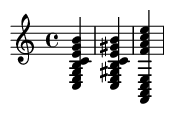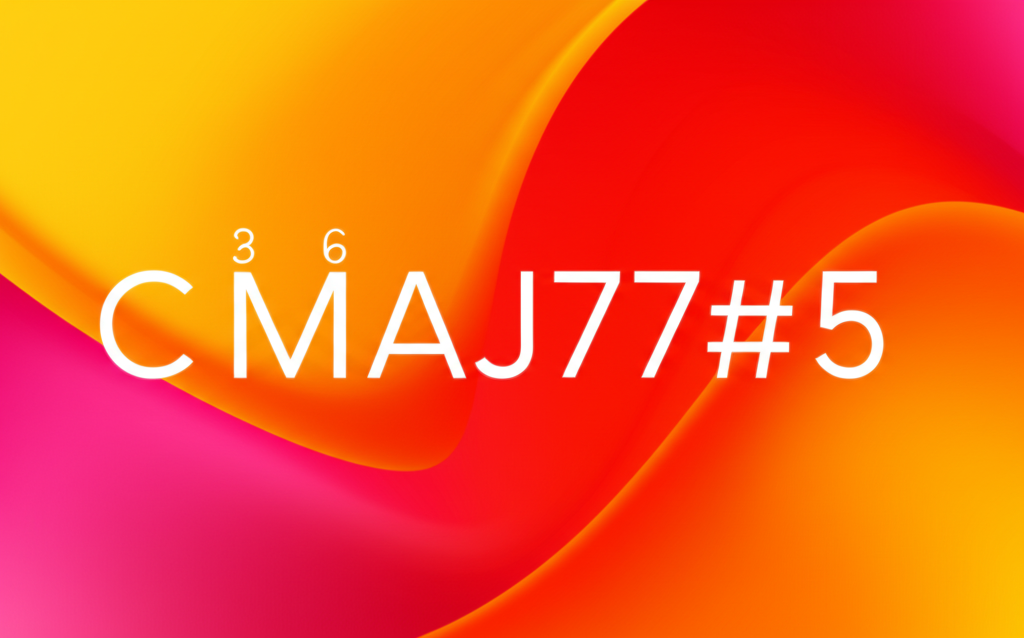Summary:
The Maj7#5 chord is a paradox: simultaneously floating and tense, beautiful and unsettling. This article explores its unique sonic qualities, from its theoretical construction as an augmented triad with a major seventh to its practical applications in jazz, pop, and film music. Discover how to use this chord to create sophisticated voice leading, tap into the sounds of the melodic minor scale, and elevate your compositions and improvisations.
Keywords:
Maj7#5, major seventh sharp five, augmented major seventh, chord analysis, harmony, music theory, jazz harmony, composition, improvisation, altered chords, extended chords, Lydian Augmented
Introduction:
Beyond the foundational major and minor chords lies a universe of colorful harmonies. Among the most evocative is the Maj7#5 chord. Often called an augmented major seventh, this chord can inject a sense of dreamlike wonder, sophisticated tension, or cinematic mystery into your music. Whether you're a jazz improviser, a budding composer, or a producer looking for fresh sounds, understanding this chord is a key to unlocking a new level of harmonic expression.
What is a Maj7#5 Chord? Structure and Theory
The Maj7#5 chord is a four-note chord built from an augmented triad with an added major seventh. Its name tells you everything you need to know about its construction:
- Maj7: It contains a major seventh interval above the root.
- #5: It contains an augmented (or sharp) fifth interval above the root.
The formula is: Root - Major Third - Augmented Fifth - Major Seventh (R - 3 - #5 - 7).
It is commonly notated as Cmaj7#5, Cmaj7(aug), or C+M7. The core tension comes from the augmented fifth, while the major seventh adds a layer of brightness and space, preventing it from sounding as aggressive as a simple augmented triad.
Examples:
Example 1: A Cmaj7#5 Chord
Here is a Cmaj7#5 chord, with the notes C, E, G#, and B. Notice the bright major seventh (B) combined with the tense augmented fifth (G#).

Example 2: Common Application - Chromatic Voice Leading
One of the most effective uses of the Maj7#5 is creating smooth chromatic movement. In this classic jazz progression, a Cmaj7#5 chord is used to connect a Cmaj7 (the I chord) to an Fmaj7 (the IV chord). Listen for the upward pull of the fifth: G (in Cmaj7) → G# (in Cmaj7#5) → A (in Fmaj7).

Harmonic Functions and Applications:
The Maj7#5 chord is versatile and can be used in several key musical situations:
- The Altered Tonic (Imaj7#5)
: As shown in the example above, its most frequent role is as a Imaj7#5. It serves as a chromatic passing chord between the tonic (I) and the subdominant (IV). This
Imaj7 → Imaj7#5 → IVmaj7progression is a staple in jazz and sophisticated pop, adding elegance and forward motion. - A Chord from the Minor Key Universe: The Maj7#5 isn't just a random alteration; it exists naturally within diatonic harmony. It is the III chord of the harmonic and melodic minor scales. For example, in A melodic minor (A B C D E F# G#), the chord built on the third degree (C) is C-E-G#-B — a perfect Cmaj7#5. This connection allows you to use it to pivot between major and minor tonalities or to add a dark, romantic color to your progressions.
- Cinematic and Atmospheric Sound: The chord's unresolved, floating quality makes it a favorite of film and TV composers. It can create a sense of mystery, wonder, or psychological tension. Think of the scores by Bernard Herrmann or modern sci-fi soundtracks that need to evoke something otherworldly.
Historical Context and Notable Use:
While its roots can be traced to late-Romantic and Impressionistic composers like Claude Debussy, who explored non-functional, coloristic harmonies, the Maj7#5 truly found its home in jazz. Post-bop pioneers like Wayne Shorter used it extensively; his composition "Fee-Fi-Fo-Fum" is a masterclass in its application. Jazz pianists like Bill Evans and Herbie Hancock also frequently used voicings of this chord to add depth and sophistication to standards and their own compositions.
Improvising Over the Maj7#5 Chord:
The unique structure of the Maj7#5 chord points directly to a powerful improvisational tool: the Lydian Augmented scale. This scale is the third mode of the melodic minor scale. For a Cmaj7#5 chord, you would use the C Lydian Augmented scale:
C - D - E - F# - G# - A - B
Notice how this scale contains all the chord tones (C, E, G#, B) and adds colorful extensions like the 9th (D), #11th (F#), and 13th (A). Playing this scale over the chord will perfectly capture its dreamy, expansive sound, as it naturally avoids the plain 5th (G), which would clash with the chord's G#.
Conclusion:
The Maj7#5 chord is far more than a dissonant curiosity; it's a gateway to a richer harmonic world. By understanding its structure (R-3-#5-7), its primary function as a chromatic bridge (I → Imaj7#5 → IV), and its deep connection to the melodic minor scale, you can wield it with confidence. Start by substituting it for a Imaj7 chord in a familiar tune. Experiment with the Lydian Augmented scale in your solos. How will you use its unique, mysterious sound to tell your own musical story?
References:
Levine, M. (1995). *The Jazz Theory Book*. Sher Music Co.
Benward, B., & Saker, M. (2009). *Music in Theory and Practice*. McGraw-Hill.
Rawlins, R., & Bahha, N. (2005). *Jazzology: The Encyclopedia of Jazz Theory for All Musicians*. Hal Leonard Corporation.
